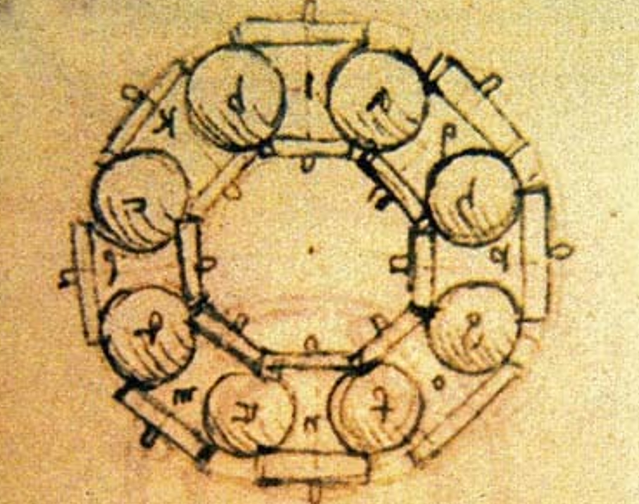The History of Bearings: Evolution Through Time.

Introduction: The History of Bearings: Evolution Through Time
Bearings have played a fundamental role in mechanical engineering for centuries, allowing machines to function smoothly by reducing friction and supporting rotational and linear movements. The earliest forms of bearings date back to ancient civilizations, where simple wooden rollers and lubricated grooves were used to move heavy objects. Over time, technological advancements have led to the development of more sophisticated bearings, incorporating materials such as steel, ceramics, and even magnetic fields for enhanced performance. Today, bearings are found in nearly every industry, from automotive and aerospace to medical and industrial machinery, proving their indispensable role in modern engineering.Bearings have evolved from primitive wooden rollers in ancient civilizations to high-precision engineering marvels. Milestones include:
- 15th Century: Leonardo da Vinci’s early ball bearing sketches.
- 18th Century: Philip Vaughan’s first modern ball bearing patent.
- 20th Century: Innovations like self-aligning and tapered roller bearings.
- 21st Century: Development of AI-powered predictive maintenance and smart bearings.
1. Who Invented Bearing?

Bearings have been a crucial innovation in engineering, enabling smooth motion, reducing friction, and supporting loads in mechanical systems. Their development spans from ancient civilizations to modern high-performance designs, shaping industries worldwide.
Ancient Beginnings: The First Bearings
-
3500 BCE: Early civilizations in Mesopotamia and Egypt used wooden rollers to move heavy objects, a primitive form of bearing technology.
-
1500 BCE: Egyptians applied lubricated grooves in sleds to transport massive stones for pyramids, reducing friction.
-
4th Century BCE: Greek engineer Diades of Pella designed rotating platforms using low-friction pivots, an early step toward modern bearings.
-
Roman Empire (50 BCE – 400 CE): Romans used bronze sleeve bearings in carts and mills, advancing bearing technology in everyday life.
The Renaissance and Early Modern Advancements
-
1500s: Leonardo da Vinci sketched the first ball bearing concept, illustrating rolling elements to minimize friction in mechanical devices.
- 1700s: John Harrison, a British clockmaker, developed high-precision bearings for marine chronometers, improving navigation.
The Industrial Revolution: Mass Production & Steel Bearings
-
1794: Philip Vaughan, a Welsh inventor, patented the first modern ball bearing, featuring balls in a grooved raceway to prevent wear.
-
19th Century: Bearings became essential in steam engines, textile mills, and industrial machinery, accelerating mechanization.
-
1883: Friedrich Fischer, a German engineer, developed the first machine for mass-producing steel balls, revolutionizing bearing manufacturing.
-
1907: Sven Wingquist, a Swedish engineer, invented the self-aligning ball bearing, leading to the founding of SKF (Svenska Kullagerfabriken).
20th Century: Precision Bearings & Technological Growth
-
1920s-1940s: Bearings became critical in automotive, railway, and military applications, improving efficiency and durability.
-
1950s-1970s: Advancements in tapered roller bearings, needle bearings, and ceramic bearings led to more specialized applications.
-
1960s-1980s: The aerospace industry adopted high-speed and high-temperature-resistant bearings for jet engines and satellites.
-
1980s-Present: Bearings evolved with computerized manufacturing, magnetic levitation, and self-lubricating materials for ultra-precise applications.
Modern Bearings: Innovation & Future Trends
✔ Automotive & EVs – High-speed, low-friction bearings improve fuel efficiency and electric motor performance.
✔ Aerospace – Lightweight ceramic and magnetic bearings ensure smooth operation in extreme conditions.
✔ Medical Devices – Miniature bearings enable precision in surgical instruments and imaging equipment.
✔ Renewable Energy – Wind turbines rely on heavy-duty bearings for long-term efficiency.
✔ Industry 4.0 – Smart bearings with sensors and IoT connectivity allow predictive maintenance.
From wooden rollers in ancient Egypt to high-tech magnetic and ceramic bearings in modern industries, bearings have transformed engineering across centuries. As technology advances,
2. The 1st Bearing in the World

Bearings have been fundamental to engineering and mechanics, enabling smooth motion and reduced friction in machinery. The evolution of bearings dates back thousands of years, leading to the development of the modern ball bearing we use today.
Ancient Bearings: The Earliest Forms
-
Ancient Egypt (3500 BCE): Workers used wooden rollers under heavy stones to reduce friction, an early application of the rolling principle.
-
4th Century BCE (Greek & Roman Engineering): Low-friction pivots and lubricated grooves were used in carts, mills, and rotating platforms.
-
2nd Century CE (China): Early bamboo sleeve bearings were used in water wheels, improving efficiency in irrigation systems.
Leonardo da Vinci's Contribution (15th Century)
-
Leonardo da Vinci (1490s) sketched a ball bearing design, featuring rolling elements to minimize friction in mechanical parts.
-
Though never built, his concept laid the foundation for future ball bearing innovations.
The First Modern Ball Bearing: Philip Vaughan (1794)
-
In 1794, Philip Vaughan, a Welsh inventor, patented the first ball bearing design.
-
His innovation featured metal balls rolling in grooves inside a bearing housing, reducing friction and preventing lateral movement in machinery.
-
This design marked the beginning of modern bearing technology, improving efficiency in industrial applications.
SKF & the Self-Aligning Bearing: Sven Wingqvist (1907)
-
In 1907, Sven Wingqvist, a Swedish engineer, developed the self-aligning ball bearing, allowing for smooth operation even with misalignment.
-
This groundbreaking invention led to the establishment of SKF (Svenska Kullagerfabriken), one of the world’s largest bearing manufacturers.
-
The self-aligning ball bearing revolutionized industrial applications, making modern machinery more durable and efficient.
From ancient wooden rollers to high-tech ceramic and magnetic bearings, the evolution of bearings has shaped industries like automotive, aerospace, and manufacturing. Today, modern bearings incorporate smart sensors, advanced materials, and AI-driven diagnostics, ensuring greater efficiency and longevity.
The first bearing in history laid the foundation for countless technological advancements, proving that even simple innovations can drive industrial progress for centuries.
Conclusion: The History of Bearings: Evolution Through Time
Mar 28,2025
